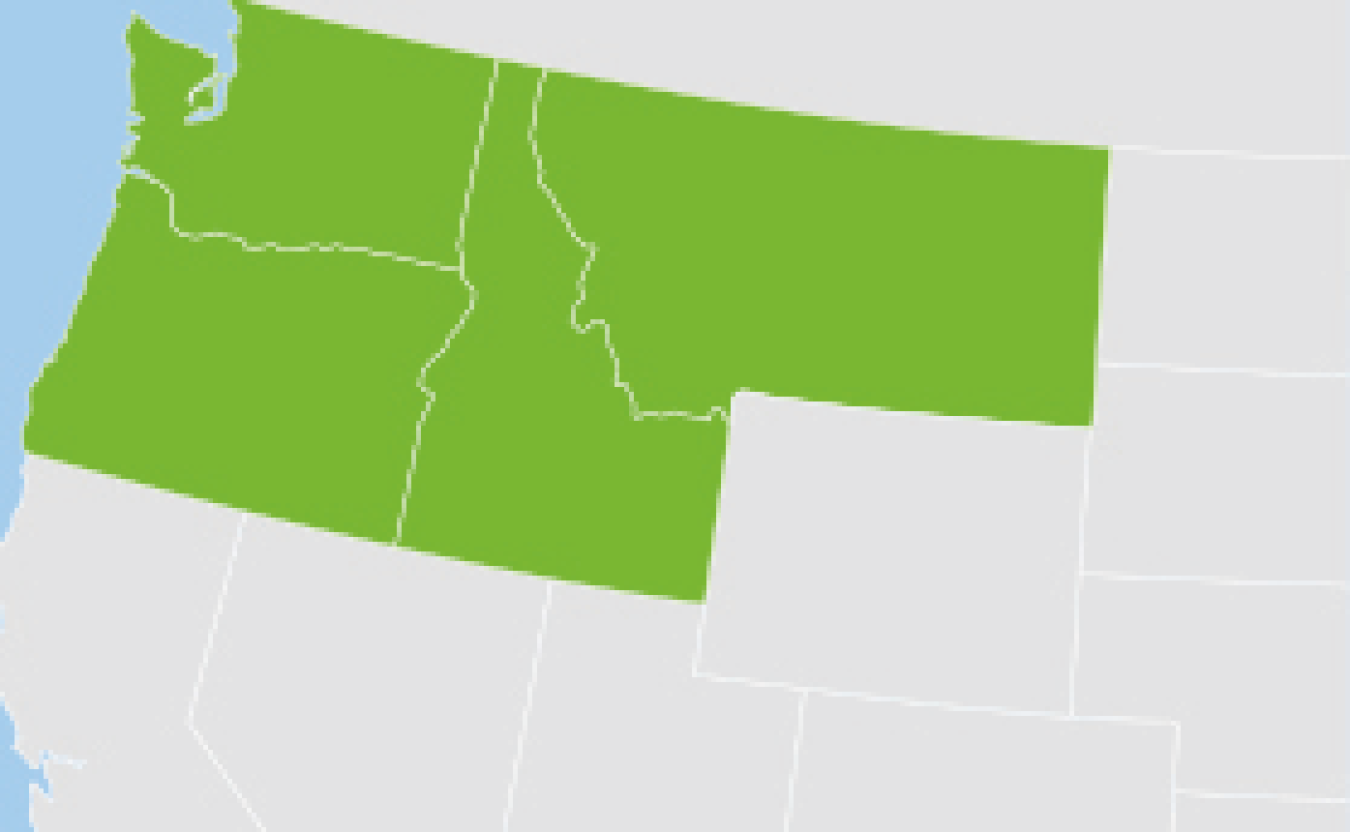In 2009, the U.S. Department of Energy’s (DOE’s) Advanced Manufacturing Office (AMO; formerly the Industrial Technologies Program) awarded grants to 23 states and 5 regional entities to help disseminate energy-saving resources and information to industrial manufacturers in their areas. The Northwest region of the United States is known for its long-standing commitment to energy efficiency. As part of this commitment, the Washington State University Extension Energy Program (WSU), Oregon Department of Energy (ODOE), Idaho Office of Energy (IOER), and Montana Department of Environmental Quality (MDEQ) developed a multifaceted approach to helping medium- and large-sized industrial plants identify and implement affordable energy-efficiency measures.
The team’s effort included delivering training, assessments, and technical and project implementation support directly to industrial manufacturers, while strengthening regional infrastructure elements that support significant reductions in industrial energy use over the long term.
Purpose
While WSU and ODOE had already begun work with Northwest manufacturers to improve energy efficiency, Save Energy Now funding gave them the ability to extend partnerships throughout the region and increase the number of training activities.
The team focused its funding on a number of specific areas that complemented existing programs and gave attention to areas not covered by previous efforts. These included plant energy assessments; technical and program support for plants to help them apply what they learned from the assessments; a series of trainings on industrial best practices (described below); and a strong stakeholder outreach program.
The goal of the effort was to establish a team that would continue to provide support for regional industrial facilities beyond the end of the funding period.
Accomplishments
In total, the team performed 14 assessments that were focused on specific industrial processes (e.g., steam systems and process heating), a more plantwide approach for food and beverage, and paper production companies. The assessments used a combination of AMO’s assessment protocol with the robust assessment criteria developed by WSU. These assessments were in high demand, and the team made an effort to formalize the framework for future assessments based on what they learned throughout the process. Although the funding period ended, the team hopes that industrial energy-efficiency recognition programs in Oregon, Washington, and Idaho will help encourage industrial companies to continue their energy-efficiency efforts.
One example from the project involved the team providing analytical and technical support to a wire manufacturer in Washington for the retrofit of a recuperative burner at the plant. The project resulted in annual energy savings of approximately 3,750 million British thermal units (MMBtu), and $37,500 annually in energy cost savings.
Another example of the team’s impact involved a gold mining company in Montana. The team performed an energy assessment, and those efforts resulted in the company hiring a full-time energy manager.
Topics for trainings facilitated by the team included wastewater efficiency, pumping system optimization, and compressed air leak detection. A large part of the success of the program can be attributed to developing and maintaining relationships with other energy-efficiency organizations and regional utilities. The team’s efforts helped bring interested parties together — creating a sense of trust and reliability and helping build strong relationships. Information distributed at training sessions was supplemented by additional outreach support material. The team published a monthly newsletter throughout the course of the program. Team members also presented at several conferences — including the Western Governors Association Industrial Summit in Boise, Idaho, in 2011 — and participated on multiple steering committees — including the annual Northwest Industrial Energy Efficiency Summit.
In order to foster continued awareness and engagement in industrial energy efficiency, the team also developed new programs to maintain support activities. As a result, organizations such as the Oregon Energy Leaders and Washington Industrial Energy Leaders programs were developed to provide governor-level recognition for industrial companies leading the way in energy-efficiency efforts.
Building off of work on this program, WSU received an honorable mention for being an “Exemplary State Energy Program” by the American Council for an Energy-Efficient Economy in 2010 — one of only 18 programs to receive a top honor nationally. The award was given based on a continued commitment to energy efficiency and was one of only two given to organizations focusing on industrial energy.
Program Highlights
| Program Activity | Goal | Number Completed |
|---|---|---|
| Energy Assessments | 11 | 14 |
| Efficiency Trainings | 13 | 15 |
| Estimated Program Savings | Dollar Savings | Energy Savings |
|---|---|---|
| Total | $1.8 million per year | 1,800,000+ MMBtu per year |

The Northwest Save Energy Now Industrial Energy Efficiency Initiative put its state award from AMO to use by providing industrial companies with training, assessments, and implementation support.
PROJECT MISSION
To help industrial facilities in the Northwest reduce energy use and increase their knowledge of the benefits of energy-efficient practices, while fostering a collaborative relationship among energy-efficiency organizations throughout the region.
PROJECT BENEFITS
- Conducted trainings and assessments for a variety of industrial topics that reached employees in multiple industries beyond manufacturing, including food and beverage.
- Provided continued support to industry to help implement new practices.
- Helped create a number of new organizations that will work on energy efficiency beyond the extent of Save Energy Now funding.
PRIMARY INVESTIGATOR
Washington State University Energy Extension Program, Olympia, Washington
PROJECT PARTNERS
- Energy Trust of Oregon, Portland, Oregon
- Idaho Office of Energy Resources, Boise, Idaho
- Montana Department of Environmental Quality, Helena, Montana
- Montana Manufacturing Extension Center, Bozeman, Montana
- Northwest Energy Efficiency Alliance, Portland, Oregon
- Northwest Food Processors Association, Portland, Oregon
- Oregon Department of Energy, Salem, Oregon
- Washington Department of Commerce, Olympia, Washington
- Washington Department of Ecology, Olympia, Washington
- Washington Manufacturing Services, Mukilteo, Washington
CONTACTS
Christine Love
Washington State University Energy Extension Program
905 Plum Street SE
P.O. Box 43165
Olympia, WA 98504-3165
Phone: 360-956-2172
Fax: 360-956-2199
E-mail: lovec@energy.wsu.edu
Jamey Evans
U.S. Department of Energy
Advanced Manufacturing Office
Phone: 720-356-1536
Email: jamey.evans@ee.doe.gov
Sandy Glatt
U.S. Department of Energy
Advanced Manufacturing Office
Phone: 720-356-1544
Email: sandy.glatt@ee.doe.gov
